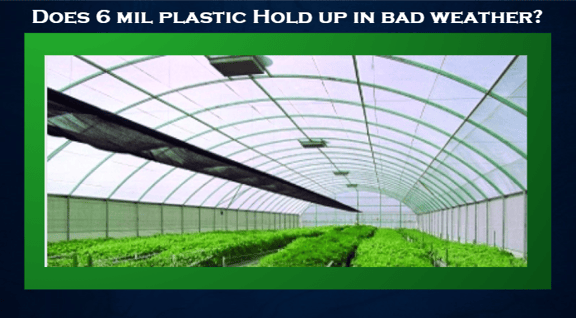Greenhouse Coverings- What are the Differences?
When it comes to choosing a greenhouse covering, there are several options available, each with its own advantages and considerations. Let's delve into the differences between 4 mil, 6 mil, and 10 mil poly plastic, as well as polycarbonate and SolaWrap, to help you make an informed decision for your greenhouse.
-
4 Mil Poly Plastic: This is a relatively thin and lightweight option for greenhouse coverings. It offers basic protection from the elements and allows light transmission, but it may not have the same level of durability and longevity as thicker materials. 4 mil poly plastic is suitable for temporary or seasonal greenhouses, where cost-effectiveness is a priority, but it may need to be replaced more frequently.
-
6 Mil Poly Plastic: This is a commonly used material for greenhouse coverings. It provides better durability and strength compared to 4 mil poly plastic. It offers decent protection against weather elements, UV rays, and light transmission. However, its ability to tolerate wind, hail, and heavy snow loads can vary depending on factors like the quality of the plastic, greenhouse structure, and prevailing conditions.
-
10 Mil Poly Plastic: If you require enhanced strength and durability, 10 mil poly plastic is a thicker option to consider. It provides better resistance against punctures, tears, and other potential damage. With its increased thickness, it can withstand more challenging weather conditions, including higher wind speeds and heavier snow loads. However, it is important to note that the increased thickness may slightly reduce light transmission compared to thinner options.
-
Polycarbonate: Polycarbonate is a rigid, transparent material known for its exceptional strength and impact resistance. It offers excellent light transmission and UV protection. Polycarbonate panels come in various thicknesses, typically ranging from 4 mm to 16 mm. Thicker polycarbonate panels provide better insulation properties and can withstand more extreme weather conditions. Polycarbonate is a popular choice for year-round or high-impact greenhouse applications, but it is typically more expensive than poly plastic options.
-
SolaWrap: SolaWrap, a remarkable greenhouse covering option, offers a host of benefits that set it apart from polycarbonate. With a 10-year warranty against UV degradation, it outperforms polycarbonate in terms of longevity. The R-Value of 1.7 ensures excellent insulation, while the impressive 83% transparency allows abundant natural light into your greenhouse. SolaWrap is the only product on the market that combines high transparency and high diffusion, providing up to 83% diffused light for optimal plant growth.
When choosing the right greenhouse covering, consider factors such as your specific climate, desired durability, insulation requirements, light transmission needs, and budget. Consulting with greenhouse experts or suppliers can provide further guidance tailored to your specific situation. Remember, the choice of greenhouse covering plays a vital role in creating an optimal environment for your plants' growth and overall greenhouse success.









